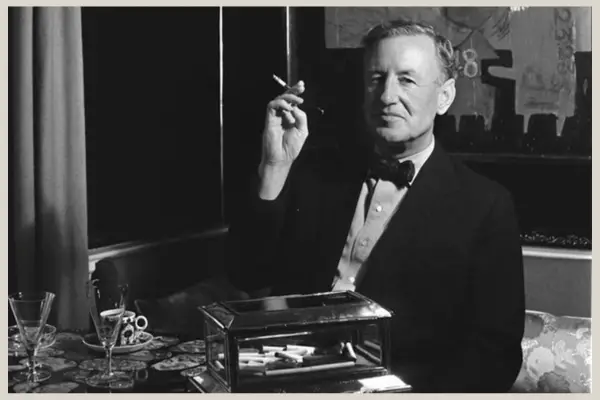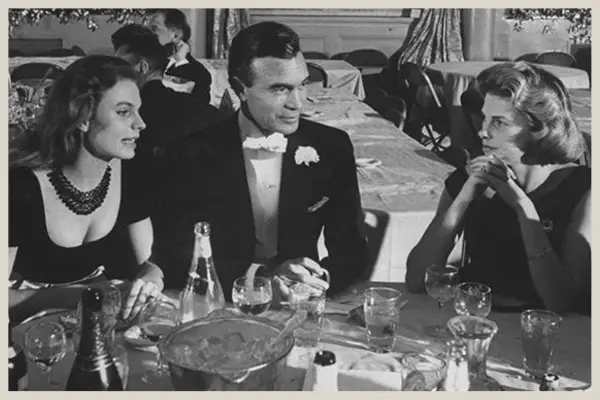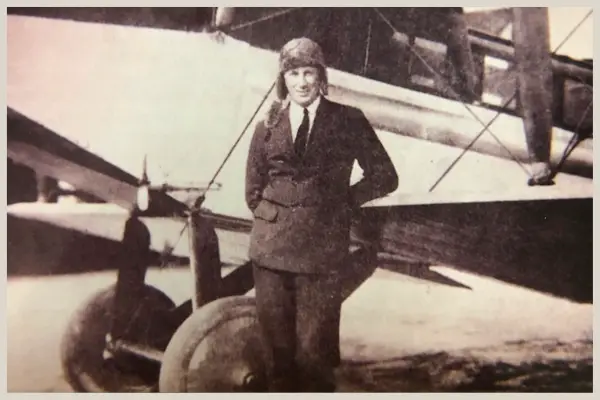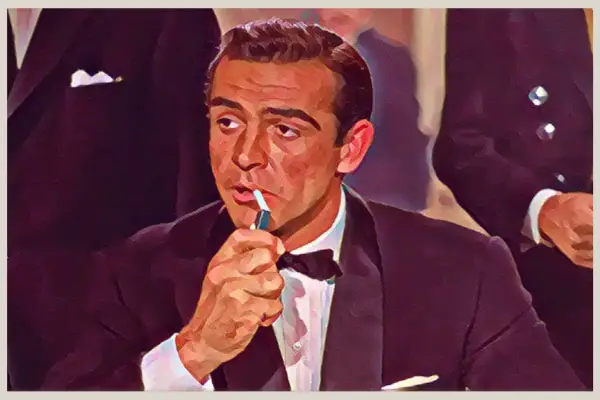James Bond – The Realest Piece of Fiction Ever Created
James Bond is a figure admired and recognized worldwide, immortalized in countless books and films. Yet, despite his iconic status, the origins of his character remain a subject of speculation and intrigue. But who is James Bond based on?
There is no single historical figure 007 is based on. It’s more than likely that Bond’s creator, Ian Fleming, drew inspiration from more than one person in his life to bestow in the most sophisticated man in modern history.
Fleming, a former intelligence officer and journalist, conceived the character of Bond, shaping him from a mixture of influences including his personal experiences, individuals he met during his time in service, as well as the broader cultural zeitgeist of the post-war era.
This multi-layered source of inspiration has resulted in a complex character that, despite being purely fictional, feels as tangible and nuanced as a real person. In the sections that follow, we’ll explore the influences who James Bond is based on, and piece together the fascinating story behind the creation of the world’s most famous secret agent.
Who is James Bond Based On?
Ian Fleming: A Reflection of Self
When any fictional character is created idiosyncrasies and preferences usually mirror those of the author. Who is James Bond based on? Certainly some of him will be reflected in his creator, Ian Fleming.
Their shared interests, from their taste for scrambled eggs to their similar golf handicaps, provide a glimpse into how Fleming transferred elements of his personal life into his legendary character. Like a true mirror reflecting life, James Bond’s habits and behaviours were drawn from Fleming’s own lifestyle.
Fleming’s preference for a specific brand of toiletries found its way into Bond’s routine, as did their shared love for golf and gambling, highlighting the depth of the influence of Fleming’s lifestyle on Bond’s character.

The creator and his creation shared an identical preference for custom-made Morland cigarettes, a habit Fleming had cultivated since the 1930s. To distinguish Bond further, Fleming added three gold bands to the cigarette filter in his novels, a symbolic representation of his own naval Commander’s rank during the war.
Fleming’s own life was indeed a reservoir of inspiration that fueled his narratives. He populated his stories with names familiar to him—school friends, two school bullies called Blofeld and Scaramanga also made thir way into Bond’s life. Fleming’s other acquaintances, relatives, and even lovers also helped make up the character that is James Bond—adding an authentic touch to his narratives.
Yet, Bond was more than just a reflection of Ian Fleming. He was a character forged from a blend of individuals Fleming encountered during his intelligence service. In Fleming’s own words, Bond “was a compound of all the secret agents and commando types I met during the war.”
This synthesis of real-life inspirations added a multi-dimensional complexity to James Bond, making him more than just a mirror of his creator, and ideed he’s based on many more people Fleming had grown to know.
Porfirio Rubirosa: The Jet-setting Playboy
Historian and lawyer Daniel J. Voelker presents an intriguing argument that James Bond is based on Porfirio Rubirosa, a charismatic Dominican playboy, diplomat, soldier, polo player, and race car driver.
Known for his high-flying international lifestyle and his magnetic allure to women, Rubirosa left an indelible imprint on the world. His romantic entanglements were legendary, with two of his five wives among the wealthiest women in the world at their time.

However, this influential muse remained largely unpublicized, Voelker theorizes, due to concerns about potential backlash stemming from racial prejudice. Born of a mixed racial background, Rubirosa’s public association with Bond might have been controversial, given the societal climate of Fleming’s audience in the 1950s and early 60s.
Voelker asserts that, out of all the speculated inspirations for James Bond, it is Rubirosa who truly ticks all the boxes. The parallels between Rubirosa and Bond, according to Voelker, are strikingly uncanny.
This assertion isn’t merely superficial—it stems from a meticulous comparison of Fleming’s and Rubirosa’s lives over a span of three decades. Their shared interests, lovers, admirers, and social circles all seem to echo one another, adding significant credence to the theory that Rubirosa was a primary model for the iconic secret agent.
Sidney Cotton: The Eyes in the Sky
Sidney Cotton, an Australian who served the British Royal Naval Air Service, was another character from Fleming’s life who parts of is James Bond based on. A close confidant of Fleming during World War II, Cotton had an adventurous career that holds striking parallels with James Bond’s daring escapades.
Cotton, a veteran pilot from the First World War, was later recruited by MI6, Britain’s intelligence service. His mission was to covertly photograph German factories, military installations, and airfields from an ingeniously hidden camera within his plane’s fuselage.

Much like the calculated risks Bond would later take, Cotton pushed the boundaries of espionage, openly photographing installations while using unsuspecting individuals as cover—most notably, Hermann Göring, Hitler’s deputy.
Highlighting his audacious spirit, Sidney Cotton piloted the last civilian plane out of Berlin at the outbreak of the Second World War. As he flew over the stirring waters of the German sea, he simultaneously captured invaluable photographs of the German navy.
His daring actions echo throughout the narratives of James Bond, pointing to another significant layer in the formation of the James Bond character.
Patrick Dalzel-Job: The Principled Daredevil
Patrick Dalzel-Job, a World War II veteran, is another intriguing character that James Bond is based on. A man of many talents, Dalzel-Job was an accomplished linguist and author. He was also a skilled mariner, navigator, parachutist, diver, and skier, embodying the same spirit of adventure and diversity of skills that 007 is renowned for.
Known to Fleming through his service with 30AU, Dalzel-Job had a rebellious streak that resonates with Bond’s character, particularly when it came to standing against orders on points of principle. This characteristic of principled defiance brought an edge to James Bond, distinguishing him from typical subservient secret agents.
Despite the parallels between his life and Bond’s adventures, Dalzel-Job was a modest man, known for his dismissive stance towards the Bond franchise. When once questioned about his possible connection to Bond, he denied it, saying, “I have never read a Bond book or seen a Bond movie. They are not my style… And I only loved one woman and I’m not a drinking man.”
This seemingly contradictory response tells us he knows exactly what Bond is like, and although he might not approve of Bond’s womanizing ways, one can’t deny Bond’s attitude to orders and skilled at so many pursuits is Bond-like.

Duško Popov: The Triple Agent and Gambler Extraordinaire
Another pivotal figure in the creation of James Bond was Duško Popov, a Serbian triple agent who skillfully navigated the treacherous waters of espionage during World War II. Known by different code names—”Duško” in VOA, “Tricycle” in MI6, and “Ivan” in the Abwehr—Popov managed to juggle loyalties and maintain a facade of deception, a trait that significantly colored Bond’s character.
Popov’s path crossed with Fleming’s in Lisbon, Portugal, where Fleming was assigned as his MI6 escort. It was during this assignment that Fleming witnessed a high-stakes event that would later serve as the basis for his first Bond novel, Casino Royale.
Popov, in a daring bluff, placed an enormous bet of $40,000 at a baccarat table in the Estoril Casino. This audacious move was intended to intimidate a rival into withdrawing from the game.
Sound familiar? This defining moment, emblematic of the risk, allure, and glamour that would become hallmarks of the Bond franchise, found its way into many Fleming’s narratives.
Popov, with his intricate web of espionage and his daring gambler’s spirit, was undoubtedly a key inspiration of who James Bond is based on.
Sidney Reilly: The Adventurous Agent
Sidney Reilly, a seasoned agent serving Scotland Yard’s Special Branch and the British Secret Service Bureau, contributed another important facet to the character of James Bond. Reilly. Employed by Sir Mansfield Smith-Cumming, Reilly was an operative for MI1c—an early incarnation of what would become MI6.
Reilly’s espionage adventures were relayed to Fleming by Reilly’s friend Sir Robert Bruce Lockhart, and it’s said that the tales of Reilly’s daring exploits sparked Fleming’s imagination. The thrilling narratives of cloak-and-dagger operations played a significant role in shaping the adventurous spirit that is synonymous with James Bond.

Fleming acknowledged this inspiration, revealing to a colleague at The Sunday Times that the idea of Bond was born after hearing about Reilly. You can find out the whole story of Sidney Reilly in the biography Ace of Spies: The True Story Of Sidney Reilly.
The impact of Sidney Reilly’s exploits on Fleming was so profound that they became a cornerstone in the creation of his fictional secret agent, adding an element of thrilling adventure that would become a key characteristic of James Bond.
Literary Inspirations
In addition to the mosaic of real-life individuals that James Bond is based on, Ian Fleming also drew inspiration from various literary sources. One such character is the secret agent Gregory Sallust, the brainchild of Dennis Wheatley. Sallust, who was based on Wheatley’s late friend Gordon Eric Gordon-Tombe, lent his clandestine charm to the development of James Bond.
Fleming also found inspiration in the works of Somerset Maugham, particularly a collection of short stories revolving around a refined and urbane spy. These stories, grounded in Maugham’s personal experiences, provided an engaging framework for the character and narratives of James Bond.
A lesser-known, but equally significant influence came from the writings of William Le Queux, who penned spy novels from 1891 to 1931. His intricate tales of espionage provided further creative fuel for Fleming’s narratives.
Inspiration for the Name ‘James Bond’
The origin of the name ‘James Bond’ is as fascinating as the character itself. Fleming chose this name from an unlikely source—a respected American ornithologist who shared the same name.
This James Bond, a specialist in Caribbean birds, authored the comprehensive field guide Birds of the West Indies. As an avid birdwatcher, Fleming possessed a copy of this guide, and found inspiration in the author’s name.

It’s said that Fleming appreciated the simplicity and unpretentious nature of the name, which was instrumental in his decision to bestow it upon his iconic character.
On another occasion, Fleming said, “I wanted the simplest, dullest, plainest-sounding name I could find, ‘James Bond’ was much better than something more interesting, like ‘Peregrine Carruthers’. Exotic things would happen to and around him, but he would be a neutral figure—an anonymous, blunt instrument wielded by a government department.”
Of course, this down-to-earth choice of name stands in stark contrast to the thrilling life of the fictional James Bond, adding a touch of irony to the mix. And Fleming may have found the ‘dullest, plainest-sounding name’ he could find, but the name emanates sophistication today.
In a fitting tribute, this connection to 007 was subtly referenced in the Bond film Die Another Day, with Pierce Brosnan‘s Bond posing as an ornithologist and perusing a copy of Birds of the West Indies.
Who is James Bond Based On?
Who is James Bond based on? Well, as you now know, he’s as a character based on various sources. Real-life personalities like Ian Fleming himself, Porfirio Rubirosa, Sidney Cotton, Patrick Dalzel-Job, Duško Popov, and Sidney Reilly contributed to the multi-faceted character that Bond has become.
Literary inspirations added further layers of complexity to his persona. Even the choice of name, sourced from an American ornithologist, became an iconic part of pop culture.
Each of these elements, woven together, gave birth to the most sophisticated spy we have ever known. Despite the diverse sources of inspiration, however, James Bond remains a unique entity who’s the quintessence of the daring secret agent.





